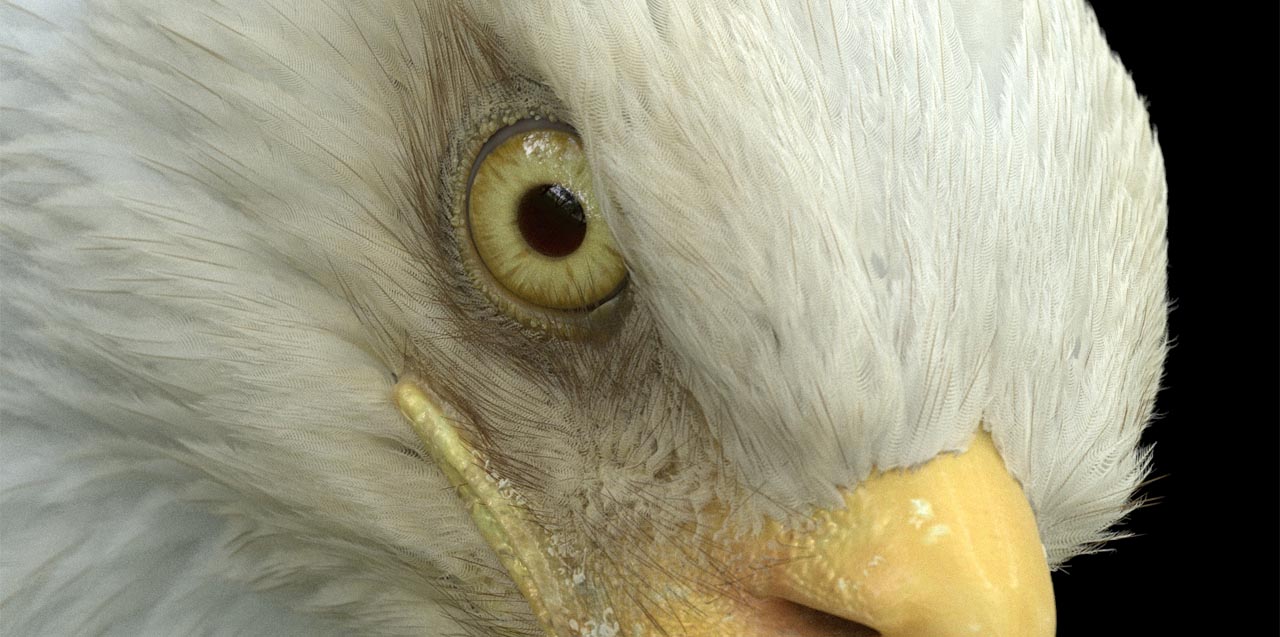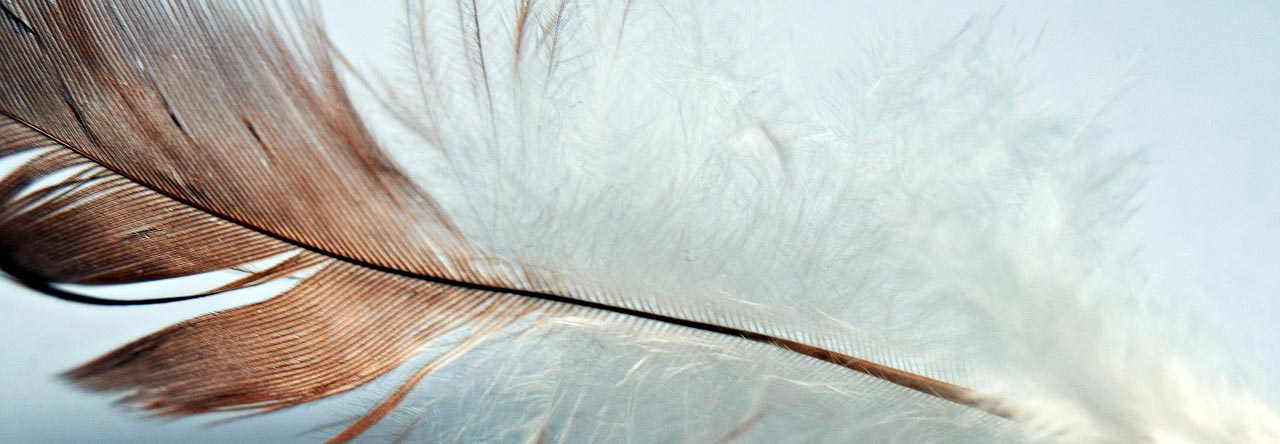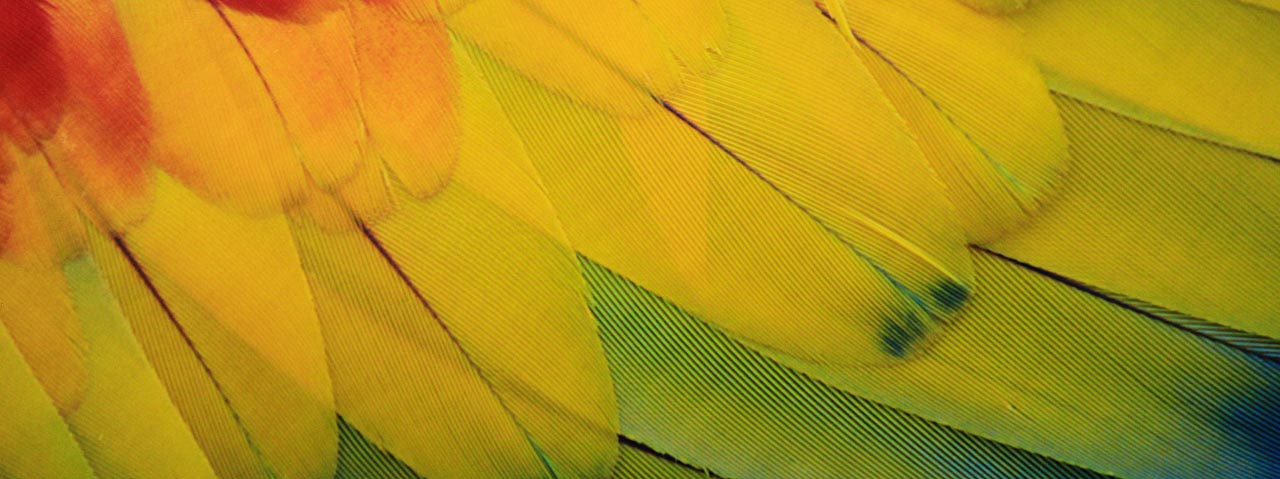| On this page |

Feathers in CGI are one of the most challenging tasks. You have to deal with large amounts of data, very different structures and - depending on the camera’s point of view - lots of detail. Of course, you also need strategies for the interaction between the feathers themselves, but also between feathers and character, as well as the surrounding environment, e.g. wind. Furthermore, you want full artistic control over the feather’s look and shape and the entire groom. Brushes, masks, paint tools, and the possibility to modify each feather at any point of your network are also important requirements for a professional and artist-friendly feather system. Last, but not least, you also want to render realistic images of your work with physically correct shaders.
Houdini’s feather system lets you create large amounts of realistic and highly detailed feathers. You can profit from sophisticated tools for look development, shaping, texturing, and grooming, but also simulation and rendering. A wide variety of nodes and attributes help you to design, modify and customize the feathers to your exact needs. The feather system is GPU-accelerated.
You can blend between different types of feathers, use guides, and display large amounts of feathers as polygon proxy geometry. You can also apply noise and deformers to the feathers to create a natural, less uniform look. Other tools let you fine-tune your work, e.g. for deintersecting overlapping feathers, blend the shapes of feathers, or use templates with complete feather sets. You also have access to many attributes to shape the feathers to your exact needs. You can add variation with clumping tools and different noise types.
There are also grooming tools to shape and style the feathers. If you're familiar with Houdini’s grooming nodes, you will be able to instantly start to brush, mask, edit and groom your feathers.
The Houdini Procedural: Feather LOP is your bridge to Houdini’s Karma CPU and XPU render engines, but also to any other Hydra delegate. You start with a rest groom. Then you can shape and simulate the feathers, and export everything to an USD file. The procedural reads the simulated feather surfaces from the USD and creates fine structures from the input geometry. A preview procedural displays the groom in the viewport.
Feather facts ¶
Feathers consist of beta keratin, just like hair and fingernails. Beta keratin is insoluble in water and a so-called fiber protein with a complex structure. Simple proto-feathers appeared around 250 million years ago during the early Triassic era. Those early feathers also consisted of beta keratin, but - compared to modern feathers - with a slightly different chemical structure. The first animal with modern feathers was Archaeopteryx lithographica. The first known record of this animal is a single feather, found in 1860 in Solnhofen/Germany. Archaeopteryx is described as the link between dinosaurs and birds and wasn’t able to fly. According to latest research, the feathers' main purpose was insulation and probably mating rituals.

Feather parts ¶
The illustration below shows the different parts of a feather. The names of the supported structures are also represented in Houdini’s feather system.

-
Calamus or Quill. The hollow part of the shaft attaches the feather to the bird’s skin or bone.
-
Shaft or Rachis. This is the long central part of the feather that holds the vanes.
-
Vane. The vanes are the plumed parts of the feather that grow from the central shaft. The two vanes have roughly the same width.
-
Barb. Barbs are the individual strands that grow from the shaft. Each barb has a little shaft and tiny barbs - the barbules. The entirety of barbs on both sides of the shaft are the vanes.
-
Barbules. They can be seen as tiny barbs that grow from the central shaft of each barb.
-
Barbicels. Barbules have tiny hooks, called barbicels.
-
Afterfeather. The downy, lower barbs. Those barbs don’t have barbicels and appear curly.
Depending on the feather’s function, you can also see structures like notches and bulges.
Note
Barbules and barbicels are not part of Houdini’s feather geometry.
Feather types ¶
There are various types of feathers with different functions and different looks. The only parts of a bird’s body without feathers are feet and beak.

Wing feathers are asymmetric with a shorter and less flexible leading edge to prevent turbulence. The feather’s arrangement on the bird’s wings creates an uplift force, allowing the bird to fly. Wing feathers are grouped into several subtypes.
-
Coverts are Contour feathers and cover the calamus areas of the underlying flight feathers.
-
Primaries are the wing’s outer feathers and attached to the bird’s hand bones. Most birds have 9 to 10 primaries.
-
Secondaries represent the wing’s inner flight feathers on the bird’s forearm. Depending on the species, there are 9-25 secondaries.
-
Teritals are the innermost flight feathers of the wing. There are usually 3-4 tertials.
Tail feathers are arranged in a fan shape and they're used for precision steering and changing direction. Typically, birds have six pairs of tail feathers, with increasing levels of asymmetry toward the outer pairs.
Contour feathers cover the bird’s body and streamline its shape. They overlap like roof shingles and their tips are waterproof, while the bases are fluffy. Contour feathers on the wings are called coverts.
Semiplumes are typically hidden beneath other body feathers and they're fluffy to insulate the bird.
Filoplumes are short feathers with just a few barbs. Their function is to sense the position of the bird’s contour feathers.
Downs look fluffy because they have flexible barbs and relatively long barbules that trap air close to body of the bird. Air is an insulator and keeps the bird warm. In contrast to semiplumes, downs are shorter and lack a distinct shaft.
Bristles have a stiff shaft with just a few barbs near the calamus. They protect the bird’s eyes and face.
Decorative plumes are often colorful and sometimes larger or strikingly shaped feathers. Popular birds with decorative plumes are male peacocks or pheasants. They use decorative plumes for mating rituals.
Feather colors ¶
Feather colors come from pigments, but also the feather’s microstructure. In the first case, the pigments are created inside specialized cells or absorbed from the bird’s nutriment. In the latter case, the feather’s structure reflects and absorbs certain wavelengths of the visible light and this results in various colors. You can also see this effect with butterfly wings.
